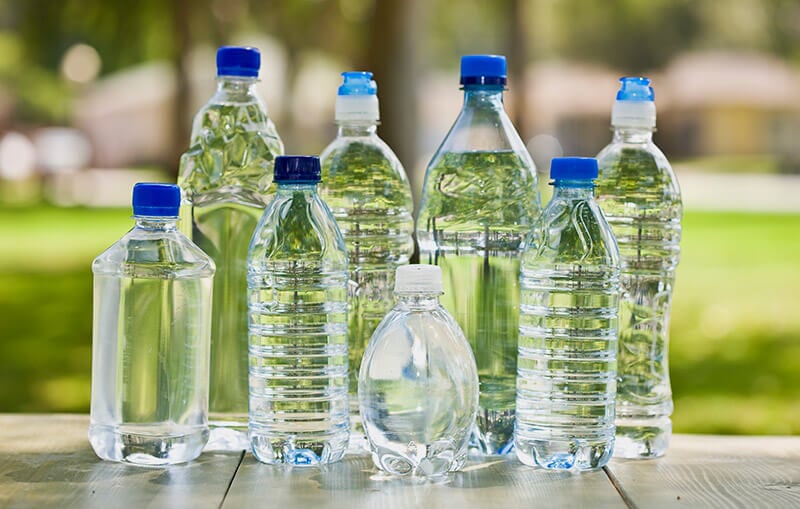For years, environmentalists have warned that plastic waste is harmful to the planet and will spend decades filling up landfills. But these oil-based polymers have expanded past the landfills. Today they’re everywhere and littering the land and sea.
Oil-Based Plastic Waste
The first manufactured plastic appeared at the London International Exhibition in 1862. An invention by Alexander Parkes, named Parkesine, was discovered by accident. It wasn’t a hit. The organic compound, Parkesine, was made with cellulose. It took until 1907 to create the first synthetic plastic. But it still wasn’t the polymer-based plastic you know now.
Some examples of naturally occurring polymers other than cellulose include,
- Tar
- Animal horn
- Tortoiseshell
- Shellac
- Amber
- Tree sap latex
A little over 100 years ago, in 1920, Hermann Staudinger provided the proof of polymers, which would become the basis for plastic. After the discovery, everyone started jumping into the plastic industry, determined to make the best and cheapest products.
To this day, plastic is everywhere. Although it’s only been in use extensively for 70 years, it’s invaded our oceans, landfills, soil, groundwater, and even bodies. The growing problem is an environmental crisis. Experts predict that by 2050, there will be more plastic than fish in the sea, further compounding the issue. It’s estimated that over nine billion metric tons of plastic have been manufactured worldwide since World War 2, and that number grows daily.

Biodegradable Plastics
Nearly every spec of plastic manufactured is still in existence. It takes 1,000 years to degrade naturally. At first, that seemed like a great idea. Indestructible products would never need to be replaced and save money.
However, there were many problems with the different chemicals used to make plastic. Some were toxic, and other products became outdated. Wood and cloth products decompose in a reasonable amount of time. For example, milk cartons will disappear in five years, and even tin cans can degrade out of existence in 50 years. Even a thin plastic shopping bag takes at least 10-years to decompose.
Here are a few more life cycles of everyday plastic items,
- Disposable coffee cups—30 years
- Straws—200 years
- Six-pack plastic rings—400 years
- Water bottle—450 years
- Coffee pod (single-use coffee pods such as K-Cups)—500 years
- Toothbrushes—500 years
- Disposable diapers—500 years
Keeping Plastic Out of Landfills
Recycling was supposed to be the solution. Despite the technological advances, it hasn’t happened at the rate the industry promised. For example, Australia manufactures over 3 million tons of plastic every year. The country recycles less than 12%.
In the U.S., it’s worse. Plastics make up 13% of solid waste, but only 8.4% actually skip the landfill and are recycled. In addition, you can only recycle plastic so many times before it’s unusable. At that point, it ends up in the landfill.
America’s landfills are already overcapacity. The U.S. and other countries used to pay for China to take our plastic. They’ve since seen the problem and stopped taking cash for garbage. This change presents another problem, with over 100 million tons of trash that don’t have a safe disposal option. How many of those tons are plastics?

An Alternative Option: Plant-Based Plastic
Did you know that there are plant-based polymers that biodegrade? The straightforward solution to American and the world’s oil-based plastic problem is plant-based polymers. There are several ways to create biodegradable and compostable plastics.
Kaneka PHBH is made using microorganisms in the soil. Other options are bioplastics created with sugar cane and corn starch. However, Kaneka PHBH has perfected the process for commercially producing plant-based plastic with plants.
The biodegradable polymer creates a strong, heat-resistant material that’s made to last and not end up in a landfill. They’re not recyclable, either. When you’re done with the product, with its disposable cutlery, water bottles, bags, or straws, they head to a composting facility. You can also use them safely in your backyard composting area.
Additionally, if they end up in another area, they’re still biodegradable. Kaneka PHBH is marine and freshwater biodegradable.
You don’t have to give up plastic products altogether to help the environment heal. Choose to use plant-based plastics to do your part and not sacrifice the everyday household items you use regularly. These polymers are safe, durable, and break down under the right conditions without taking 1000 years to biodegrade.






